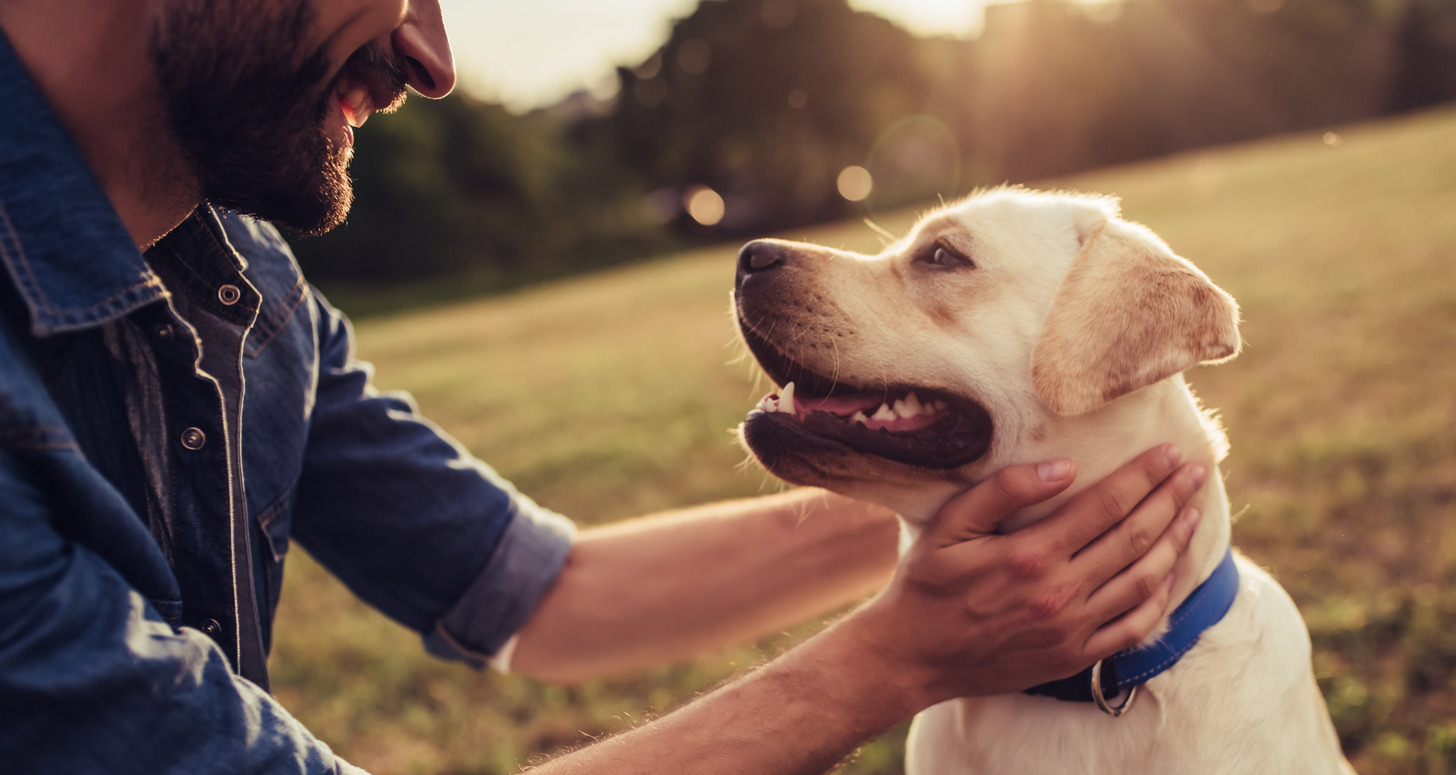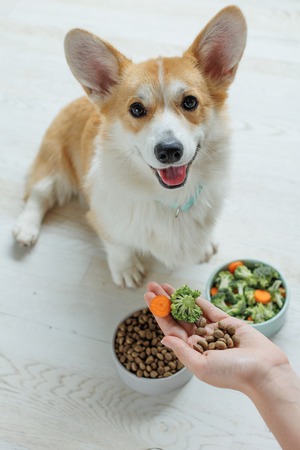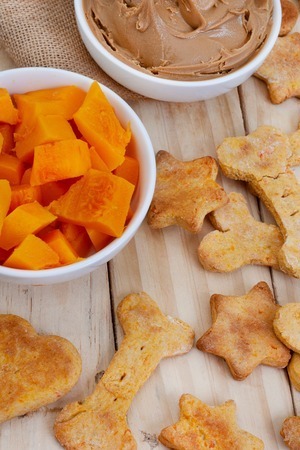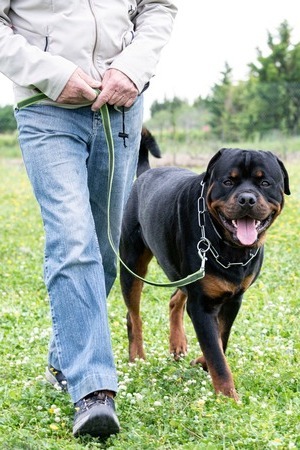Top 5 New Year’s Resolutions to Make with Your Dog in 2025
January 16, 2025 | By David Jackson

We are now over halfway through January 2025, and it’s normally around this time that people’s fervour to keep up with their New Year’s Resolutions begins to falter.
And let’s face it, we’ve all been there. But, here at All About Dog Food , we think this is the perfect time to think about setting some brilliant new goals for you and your dog for the rest of the year.
Why? Well, just as motivation starts to slide (whether that’s a new fitness plan or trying out Veganuary), what better way to pep it up again than by setting yourself some new and exciting challenges you can face head on with your trusty four-legged friend by your side.
After all, you know they’ll be rooting for you every step of the way (that right there is all the motivation you’ll need, no?) and, better yet, it’ll be for their benefit! It really is a win win…
So, without further ado, here are our Top 5 New Year’s Resolutions to Make with Your Dog that will help both you and your pup live your best lives in 2025.
Table of Contents
Table of Contents
1 - Commit to a Healthier Diet for Your Dog
 Right at the top of our list, and arguably one that will have the most impact for your dog, is to focus on making sure your dog’s diet is the best it can be.
Just like us, dogs need the right balance of nutrients to stay healthy, energetic, and happy.
And while it might be tempting to give your dog scraps or indulge them with too many treats, a nutritionally balanced diet is the ultimate key to ensuring long-term health.
Why It's Important
In short, a poor diet for your dog can lead to obesity, digestive issues, skin problems, and even chronic diseases.
Research has also shown that a healthy, balanced diet for your dog can have a positive impact on their lifespan.
How to Do It
Check in with your vet
Before making any major changes to your dog’s diet, talk to your vet. They can help identify your dog’s specific dietary needs based on breed, age and overall health. They’ll also weigh your dog and let you know if they’re under, over or the perfect weight.
Choose High-Quality Dog Food
Once you’ve had the lowdown from your vet, head on over to the Dog Food Directory right here on AADF where you can find the best dog food for your pup depending on their needs. From wet to raw to dry, we’ve reviewed over 1660 foods for you in order to make an informed choice for your dog.
Of course, when it comes to picking the best dog food, be sure to look for dog food that lists animal protein (like chicken or beef) as the first ingredient. Avoid foods with fillers like corn, soy, or excessive amounts of artificial preservatives, and try to avoid foods that use vague terms like chicken-meal.
Incorporate Fresh, Whole Foods
Adding fresh veggies or lean meats to your dog’s meals are great for giving them a nutrient boost. You can also try dog-safe fruits like apples or blueberries as healthy treats and snacks.
Portion Control
Obesity in dogs is a real issue in the United Kingdom. In fact, the UK Pet Obesity Report 2024 recently concluded that 50% of UK dogs are overweight!
Overfeeding, even with nutritious food, can exacerbate this problem and lead to obesity. So please be sure to follow feeding guidelines on the food package or as recommended by your vet to ensure you're giving your dog the right amount of food.
And remember, every dog food comes with their own unique feeding guidelines, so grab those scales and get to weighing to keep things in check.
2 - Focus on Balanced Nutrition for Overall Health
Dogs, just like people, require a balance of macronutrients like proteins and fats, along with vitamins and minerals to maintain peak health.
That’s why we think a great resolution is to focus on ensuring your dog gets a variety of nutrients in their meals and treats!
Why It's Important
A lack of balanced nutrition can lead to deficiencies or excesses, both of which can have negative effects on your dog’s overall health and wellbeing.
For instance, too little protein can lead to muscle loss, while too many carbohydrates may lead to weight gain. There’s even a link between your dog’s diet and yeast infections, so having the right balance is vital.
How to Do It
Puppies, adults, and senior dogs have different nutritional needs. Make sure you’re feeding food suited to your dog’s age and activity level.
Look for Special Diets
If your dog has specific health concerns, like allergies or sensitivities, consider food designed to address these issues. There are grain-free, hypoallergenic, and limited-ingredient diets available – and you can filter your search for these in the Dog Food Directory!
Add Supplements if Needed
Some dogs may benefit from supplements like omega-3 fatty acids (for coat health), glucosamine (for joint support), or probiotics (for gut health). Again, consult your vet before introducing new supplements to guarantee their safe for your pup.
3 - Prioritise Healthy Treats and Snacks
 Treats are often an integral part of a dog’s diet, but they can quickly add unnecessary calories or unhealthy ingredients if you're not careful. So, this year, why not make it a goal to switch to healthier treats that support your dog’s health!
Why It's Important
Not all dog treats are created equal.
Many are filled with sugars, preservatives, and artificial flavours that can contribute to weight gain and other health issues. Many also offer absolutely no nutritional value to your dog whatsoever, and realistically your dog doesn’t need to be eating these.
However, healthy treats can be a great source of additional nutrients and even serve as training aids or rewards without the guilt.
How to Do It
Choose Natural Treats
Look for treats that contain real meat, vegetables, or fruits. Some great options include freeze-dried liver, sweet potato chews, or simply carrots you can pick up along with your weekly shop!
Make Your Own
If you’re feeling crafty, there are plenty of simple, dog-friendly recipes online for homemade treats made with wholesome ingredients like pumpkin, oats, and peanut butter (just don’t add any xylitol).
Watch Portions
Unfortunately, quite a few of us tend to overdo the treats (but when your pup looks at you with those big, beautiful eyes, it’s pretty tough to resist slipping them a little something – right?). That said, it’s important to remember that treats should only account for about 10% of your dog’s daily caloric intake.
Giving too many treats can easily unbalance their diet and lead to unwanted weight gain.
Of course, if you do fancy giving your pup some premade treats, you can find a whole host of reviews in the Treats section of AADF to help you make an informed choice for your dog!
4 - Increase Your Dog’s Exercise and Activity
Did you know that a recent study by the Ordinance Survey discovered that 1 in 20 dogs don’t get walked at all?Here at AADF we were shocked to hear this.
After all, a healthy diet goes hand in paw with regular exercise which helps maintain a healthy weight, strengthens the heart, and promotes overall well-being.
So, this year, why not focus on getting your dog moving more to complement all those brilliant nutritional improvements you may be looking to make.
Why It's Important
Regular physical activity is crucial for dogs of all ages.
It helps prevent obesity, reduces stress, boosts energy levels, and contributes to better mental health by releasing feel-good hormones. Plus, it’s a great way to strengthen your bond with your dog, and it’ll even give you a little health boost too.
How to Do It
Daily Walks
Every dog is different with some high energy breeds needing a lot more exercise than others. For example, a Belgian Malinois is going to need a lot more than a Dogue De Bordeaux.
But, as a general rule of thumb you should aim for at least one brisk walk a day of about 30 minutes to 1 hour.
For more active dogs, consider two or more walks. And always remember that puppies and senior dogs may require shorter walk times, but more often throughout the day.
Interactive Play
There are so many benefits of playing with your dog - from building on your bond to providing a wealth of mental stimulation (which tires them out fyi!). So why not try games like fetch or tug-of-war are to keep your dog mentally stimulated and physically active.
Try New Activities
If you want to spice things up, explore new activities like dog agility, swimming, or even hiking. Many dogs love the variety and challenge of new environments, and having your pup there on your adventures will always be a bonus.
5 - Learn Some New Tricks and Keep Up with Their Training
 Ongoing training (yes, even passed the puppy stage) is so important for your dog’s overall fulfilment. But training isn’t just about teaching your dog commands - it’s also about supporting their mental prowess, and nutrition plays a big role in that.
A balanced diet can improve focus, memory, and motivation, making your dog more eager to learn and retain new tricks or commands!
Why It’s Important
Good nutrition supports brain health, boosts concentration, and helps reduce stress or anxiety that can interfere with learning. Plus, it’s lovely way to build on your bond with your pup.
Foods rich in omega-3 fatty acids, antioxidants, and B vitamins promote cognitive function and mental clarity.
How to Do It
Use Healthy Treats for Training
Reward your dog with nutritious treats, like freeze-dried meat or small pieces of cheese, to keep them engaged without sacrificing nutrition or overfeeding them on high calorie premade treats.
Incorporate Brain-Boosting Foods
Omega-3s from fish oils or supplements can help support cognitive function along with keeping their skin and coats healthy too.
Stay Consistent
Regular, short training sessions, combined with a nutritious diet, will help your dog stay sharp and focused. Aim for 5-minute bursts 3 times a day, and we’re sure you’ll notice a big difference in your dog’s obedience and willingness to learn.
You may also find they get sleepy faster too…
In Conclusion
Making New Year's resolutions for your dog is a great way to set yourself and your pooch up for a year of health and happiness.
By focusing on better nutrition, healthy treats, regular exercise, and mental stimulation, you can help your dog live a longer, more vibrant life.
So, grab your lead, fill up their food bowl with nutritious meals, and let’s make 2025 a year of pawsitive change for you and your dog!
Frequently Asked Questions
How do I make sure my dog has a balanced diet?
Chat with your vet to figure out what’s best for your dog’s breed, age, and health. Then, pick high-quality food that meets those needs.
What are some healthier treat options for my dog?
Go for treats with real meat, like freeze-dried liver, or even simple snacks like carrots and apples. They’re tasty and good for them!
How much exercise does my dog really need?
im for 30 minutes to an hour of exercise each day. Active breeds might need more, while puppies and older dogs can do shorter walks, but more often.
Related Blog Posts Section
More From Our Blog
References
A huge thanks to Ordinance Survey, UK Pet Food and the RSPCA, PDSA, for all of their hard word in providing statistics and research in how we can improve our dog's diet, health and wellbeing.
|